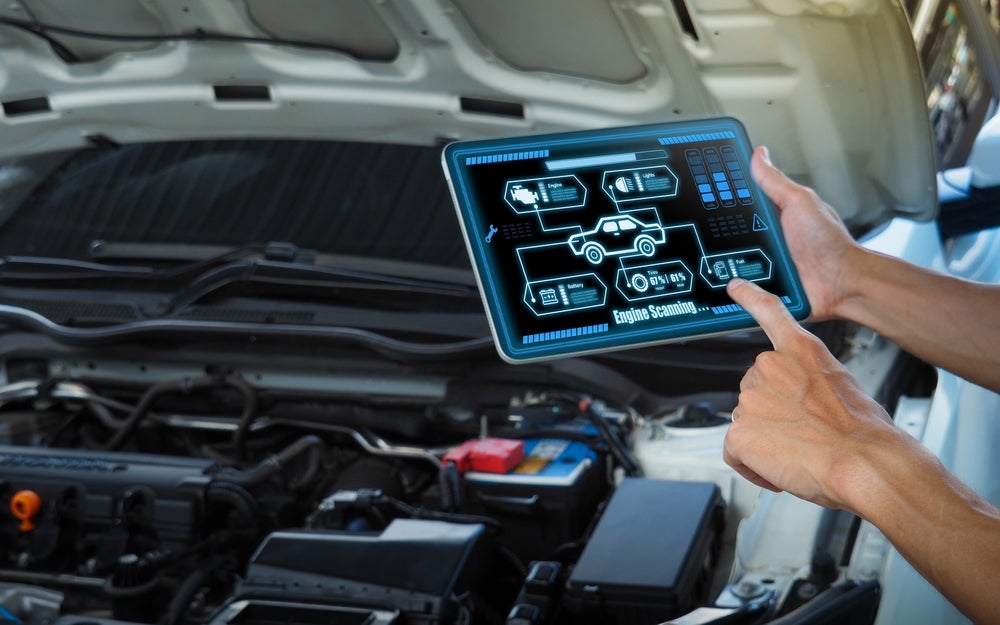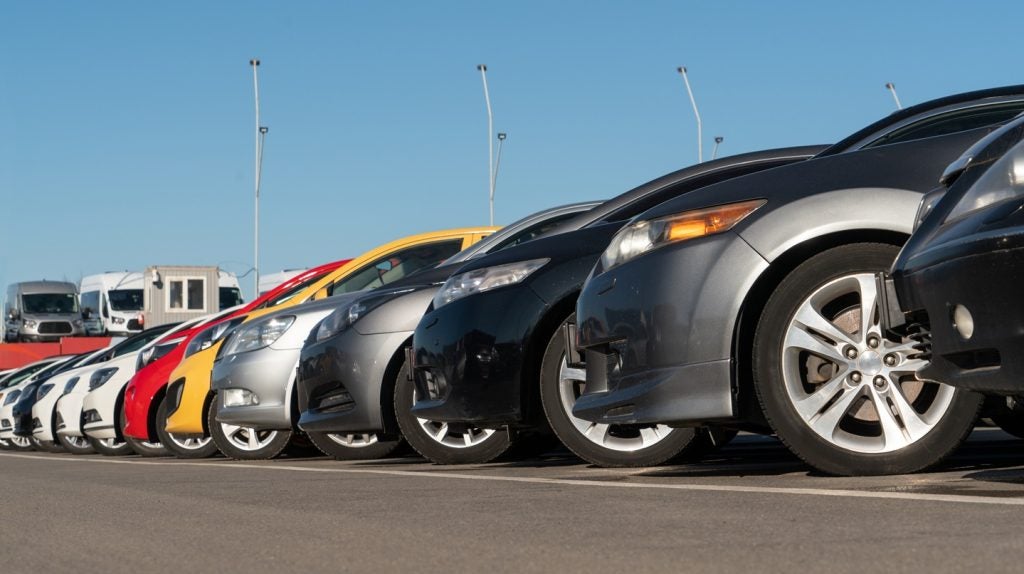
Ireland’s motor finance sector has had a challenging year. While Light Commercial Vehicles are driving growth, Electric Vehicle sales have declined by 25% as consumers face uncertainty around fuel types and rising inflation. Industry leaders, however, remain optimistic, attributing the downturn to temporary factors and noting favourable trends, such as a stabilising interest rate environment and improving vehicle affordability.
From some perspectives, it has been a mixed bag of a year for the Irish motor finance market. According to the Bank of Ireland, Light Commercial Vehicles in Ireland have performed positively, with the market growing by 9.1% year-on-year to 28,970 sales. Elsewhere, however, the market for passenger vehicle sales to September 2024 has declined by 1.4% year on year, with Electric Vehicles declining by a dramatic 25% in 2024 to a market share of 13.6%, compared with 18.4% in the same period in 2023.
Yet, while these figures might look uncertain on the face of it, those in the industry are positive.
“It could be said 2023 was an exceptional year, as the average share of Electric Vehicles sold across Europe was up 12.1% and 16.6% in the UK, so at c.13% it is now normalising,” says Derek Kavanagh, Head of Motor Finance, Bank of Ireland. “This reduction in Electric Vehicle sales should be viewed as a temporary slowdown as the EU has fully committed to having the sale of petrol and diesel vehicles banned by 2035.”
Chris Hanlon, Managing Director of First Citizen Finance shares this positive outlook, telling us, “The current state of the Irish motor finance sector is quite optimistic, particularly with recent developments in interest rates and inflation. The European Central Bank has commenced a policy of slow reduction (0.75%) across three meetings since June 2024, which has helped stabilise borrowing costs. Additionally, inflation appears to be under control, enhancing affordability for consumers.”
Hanlon believes this environment creates favourable conditions for both first-time buyers and those looking to upgrade their vehicles, especially as there is a growing interest in hybrid and electric vehicles.
How well do you really know your competitors?
Access the most comprehensive Company Profiles on the market, powered by GlobalData. Save hours of research. Gain competitive edge.

Thank you!
Your download email will arrive shortly
Not ready to buy yet? Download a free sample
We are confident about the unique quality of our Company Profiles. However, we want you to make the most beneficial decision for your business, so we offer a free sample that you can download by submitting the below form
By GlobalData“Overall, we see significant potential for growth and innovation in the sector,” Hanlon says.
John Cronin, banking industry analyst at consulting Seapoint Insights, puts that positive outlook down to the fact that it is a well-established market.
“The volume and value of car loans, and the latest data published by the Banking & Payments Federation Ireland, shows that in the first three months of this year, volume and value reached record highs,” Cronin says. “There were 16,089 car loans in the first quarter, worth a combined 208 million euro, showing 10.7% year on year in growth.”
The data Cronin refers to shows that the average size of a car loan in the first quarter of this year was 12,900 euros while separate data from Ireland’s Centrals Statistics Office shows a 9% increase in new car licenses and a 25% increase in second-hand cars licensed in the early part of the year. But that positive outlook is not necessarily reflected in the new car sector.
“But the number of new cars licensed has slowed significantly,” Cronin points out. “The growth in that sector has gone into reverse. In June new car registrations were down 50% on the same period last year and July, which is a critical month for new car sales due to the bi-annual change in registration plates, saw a reduction of 6% year-on-year. My view is that inflation means consumers are slower to buy big-ticket items because pay hasn’t grown commensurate with rising prices over the last few years. What we have seen particularly is a big slowdown in Electric Vehicle purchases, and that’s from concerns around second-hand values for Electric Vehicles.”
A post-Brexit environment
Of course, no market exists in isolation, and as we approach the fifth anniversary of the UK’s exit from the EU next January, we are finally reaching a point where we might have a clear perspective on what the post-Brexit status quo might look like, beyond the initial aftershocks.
Hanlon tells us, “The aftermath of Brexit has had a significant impact on the Irish motor finance market, and while some effects were initially difficult to assess, we now see clearer trends.”
The most obvious impact is that as barriers have been thrown up between the British and Irish markets, the Irish automotive market has turned inward.
“Prior to the Brexit referendum in 2016, imported used cars averaged c. 50k per annum,” says Kavanagh. “The imported supply reduced by 20% following Brexit in 2021, resulting in lower volumes of privately imported used cars from the UK. Post-Brexit, increased complexity and the addition of VAT and duties to the purchase price of privately imported cars has contributed to a decreased number of private buyers importing used cars from the UK. Used imports year to date are up 25% to 51,650 vehicles.”
Even this shift in the market is starting to see a stabilising effect, however.
“One of the most notable changes has been the continued decline in used car imports from the UK, although it’s important to note a slight uptick in UK imports since the introduction of the Windsor Framework in early 2023,” says Hanlon. “This development indicates a degree of stabilisation in cross-border trade. The persistent reduction in imports can be primarily attributed to the new complexities around duties and VAT that have emerged since Brexit. These factors have shifted the dynamics of the used car market, compelling consumers to seek alternatives and boosting demand for locally sourced vehicles.”
Hanlon also emphasises, however, that more cross-border red tape is not the only impact Brexit has had on the market.
“Supply chain challenges that arose post-Brexit have had a ripple effect across the sector. While some of these issues have been resolved, certain motor dealers still report sporadic delays in receiving car parts and components, impacting inventory levels and sales timelines,” he points out. “Overall, while Brexit has introduced complexities and challenges, it has also prompted the Irish motor finance sector to adapt and innovate. We are focusing on supporting local dealerships and enhancing our financing solutions to meet the evolving needs of consumers in this changing landscape. The experience gained from navigating these challenges will ultimately strengthen the sector in the long run.”
Aligning with Europe
But while British audiences might be inclined to see Brexit as having an exaggerated role on the world stage, in Ireland itself the priorities are more locally focused. From a regulatory point of view, for example, while Britain is moving away from Europe, Ireland is falling into closer alignment.
“The regulatory environment for the Irish motor finance sector is increasingly dynamic and closely aligned with broader European financial regulations,” says Hanlon. “Over the past few years, we’ve seen a significant shift toward stricter compliance standards and a greater emphasis on consumer protection.”
“The regulatory environment in Ireland in a banking context is quite stringent, particularly post-financial crisis,” Cronin agrees. “It’s a well-developed, mature regulatory landscape.”
One of the key regulatory frameworks affecting motor finance in Ireland is the Consumer Credit Act 1995, which governs the provision of credit to consumers. This legislation ensures that lenders operate transparently, providing clear and comprehensive information about financing options and associated costs.
“Compliance with this act is crucial for maintaining consumer trust and promoting a healthy competitive landscape. Additionally, regulations from the Central Bank of Ireland play a vital role in shaping the motor finance market,” Hanlon says. “The Central Bank emphasises responsible lending practices, requiring finance providers to conduct thorough assessments of a borrower’s ability to repay. This approach not only safeguards consumers but also contributes to the overall stability of the financial sector. Overall, while the regulatory environment presents certain challenges, it also provides opportunities for innovation and growth. As we adapt to these evolving regulations, we remain committed to prioritising compliance while delivering value to our customers.”
Powering the transition
One thing the Irish and British markets do have in common, however, is a shared concern for their ability to meet deadlines around the transition to electric vehicles, particularly with the 25% decrease in electric vehicle sales this year.
“Across Europe, including Ireland, one of the biggest challenges is making the transition to Electric Vehicles,” Kavanagh acknowledges. “The industry has come through the period where early adaptors embraced new Electric Vehicle technology and must now move to encourage transition in the more mainstream market.”
Hanlon also agrees that consumer uncertainty around EVs presents a continuing challenge to the Irish industry.
“Mixed messaging around fuel types — diesel, petrol, hybrid, and electric — has created uncertainty for consumers,” Hanlon says. “Additionally, the limited charging infrastructure and “range anxiety” around EVs have led to a recent dip in EV sales. The second-hand EV market is also in a period of adjustment as it seeks stability.”
Despite Brexit and regulatory differences, it is a situation that mirrors Ireland’s British counterparts.
However, Kavanagh also posits that although there are challenges here, the transition is also the Irish automotive market’s greatest opportunity.
“Ireland is an ideal country to drive an Electric Vehicle. Over the last number of years there has been significant improvement in the national charging infrastructure with over 2,100 charging points, 1,600 of which are operated by ESB, the national electricity provider,” Kavanagh argues. “As battery life improves and range anxiety eases, continued with ongoing consumer education, the market is well positioned to capitalise on the growth opportunity.”
Navigating uncertainty
Beyond the EV transition, the Irish motor finance sector also faces a broad swathe of other economic and geopolitical challenges.
“Firstly, the external global environment is uncertain, with ongoing geopolitical risks adding pressure to both consumer and business confidence,” Hanlon says. “Domestically, cost-of-living pressures are affecting consumer spending, which is compounded by inflation in new and used vehicle prices—adding to the financial strain on potential buyers.”
Some believe that this is a situation that is set to turn around, however.
“Consumers are tightening their belts as inflation has bitten hard but we’re towards the end of that now,” says Cronin.
As well as consumer confidence, Hanlon points to persistent supply chain issues that have seen certain models and brands affected by delayed part deliveries and workforce shortages, particularly in skilled technicians and sales roles.
“Dealers face high costs for investment and expansion, especially as some manufacturers introduce ‘agency’ sales models that could reshape traditional dealer dynamics,” he says. “Together, these factors contribute to a challenging landscape, where consumer confidence remains volatile, and dealerships are working hard to adapt to shifting economic conditions.”
Yet, despite these challenges, Hanlon tells us that the Irish motor finance sector has enjoyed a strong performance from 2020 to 2024, driven by pent-up demand and higher vehicle prices, especially in the used car market, as consumers have cash reserves and seek private transport options.
“The resilience of financial institutions, with better capitalisation and liquidity, also supports continued growth, with no property bubble pressures due to cautious lending,” Hanlon says.
Hanlon points to a record-high labour market, with 2.7 million employed, which adds economic stability and consumer confidence.
Cronin agrees, “I think we should see growth pick up again, owing to inflation stabilising.”
Hanlon also believes that the sector’s ability to adapt to changing consumer behaviour is a boon.
“Dealers have successfully adapted to hybrid selling, offering a seamless ‘Phygital Experience’ that integrates online and in-person sales,” says Hanlon. “Government initiatives like VAT warehousing have also provided critical support, positioning the sector to capitalise on these strengths.”
Hanlon believes the sector is full of promise, especially as advancements in technology continue to redefine the customer journey.
“At First Citizen Finance, we’re committed to enhancing this journey by integrating innovative digital solutions that make financing more accessible, transparent, and user-friendly,” he says. For example, our proprietary platform Autopoint.ie simplifies the used car purchasing process, connecting customers directly with financing options tailored to their needs. Our Abacus and EasyCalc apps empower both customers and dealers, providing quick, precise calculations that help customers make informed decisions with clarity and confidence. These tools are designed not only to streamline the financing process but also to provide an engaging and supportive experience. As we continue to embrace digital transformation, we see these innovations as essential to keeping customers informed, empowered, and satisfied, setting a new standard in the motor finance industry.”
Despite the challenges ahead and behind, Kavanagh’s forecast is slow and steady.
“The projected passenger sales out-turn for year-end 2024, will be marginally behind 2023,” he says. “Light commercial vehicles continue to perform well and more widely, the industry is projecting that the 2025 market to be roughly in line with 2024.”







